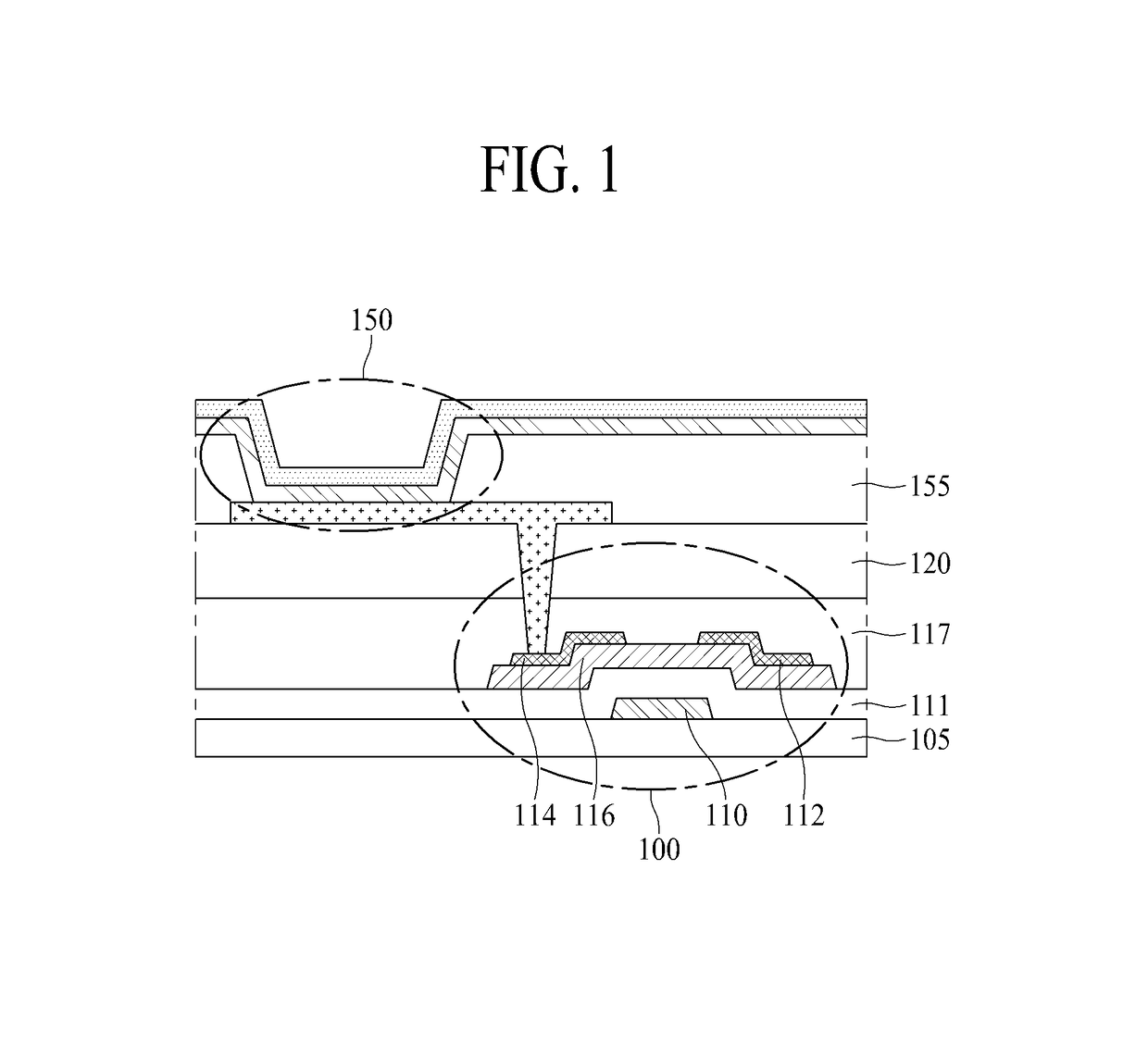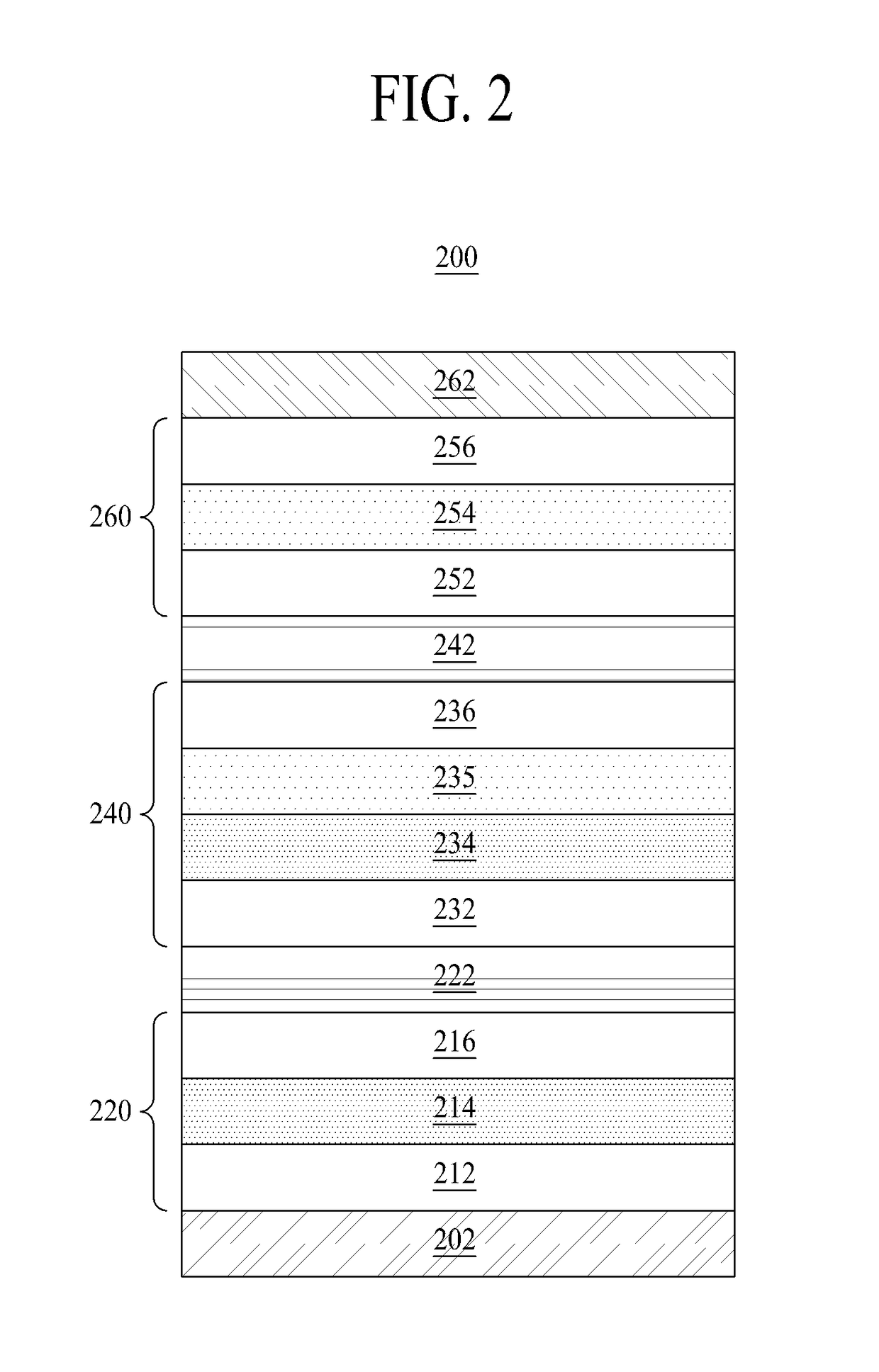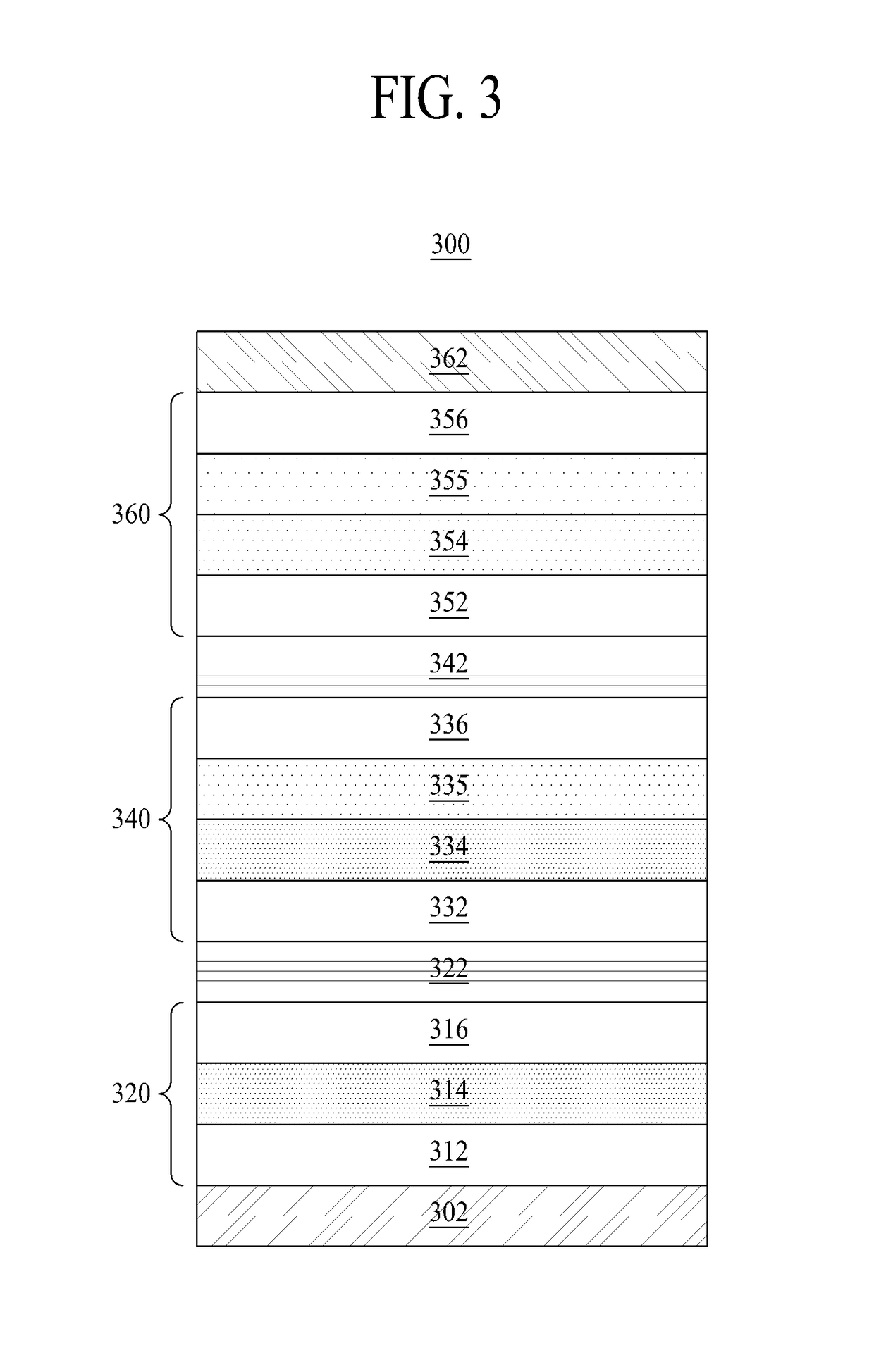Organic light emitting device
a light-emitting device and organic technology, applied in the direction of semiconductor devices, basic electric elements, electrical appliances, etc., can solve the problems of shortened lifespan of organic light-emitting devices, lowering emission efficiency, and limiting so as to improve emission efficiency and lifespan, reduce the effect of high driving voltag
- Summary
- Abstract
- Description
- Claims
- Application Information
AI Technical Summary
Benefits of technology
Problems solved by technology
Method used
Image
Examples
first embodiment
[0061]FIG. 2 is a cross sectional view illustrating an organic light emitting device 200 according to the present invention.
[0062]Referring to FIG. 2, the organic light emitting device 200 may include an anode 202, a first emitting part 220, a second emitting part 240, a third emitting part 260, and a cathode 262.
[0063]The anode 202 is electrically connected with the thin film transistor described with reference to FIG. 1 via a contact hole. The anode 202 is an electrode for injecting a hole with a positive charge to an emission layer. For an easy injection of the hole with the positive charge, the anode 202 may be formed of a transparent material such as ITO (Indium Tin Oxide) or IZO (Indium Zinc Oxide).
[0064]The anode 202 serves as a transparent layer in a bottom emission type, and also serves as a reflection layer in a top emission type.
[0065]The cathode 262 is provided at the opposite side of the anode 202 in the organic light emitting device 200. The cathode 262 is an electrode...
second embodiment
[0088]FIG. 3 is a cross sectional view illustrating an organic light emitting device 300 according to the present invention.
[0089]Referring to FIG. 3, the organic light emitting device 300 according to the second embodiment of the present invention may include an anode 302, a first emitting part 320, a second emitting part 340, a third emitting part 360, and a cathode 362. In addition, the organic light emitting device 300 according to the second embodiment of the present invention may further include an electron injection layer for a smooth injection of electron from the cathode 362, and a hole injection layer for a smooth injection of hole from the anode 302.
[0090]Also, a first charge generation layer 322 is additionally provided between the first emitting part 320 and the second emitting part 340, and a second charge generation layer 342 is additionally provided between the second emitting part 340 and the third emitting part 360.
[0091]The anode 302, the first emitting part 320, ...
third embodiment
[0098]FIG. 4 is a cross sectional view illustrating an organic light emitting device 400 according to the present invention.
[0099]Referring to FIG. 4, the organic light emitting device 400 according to the third embodiment of the present invention may include an anode 402, a first emitting part 420, a second emitting part 440, a third emitting part 460, and a cathode 462. The organic light emitting device 400 according to the third embodiment of the present invention may further include an electron injection layer for a smooth injection of electron from the cathode 462, and a hole injection layer for a smooth injection of hole from the anode 402. Also, a first charge generation layer 422 may be additionally provided between the first emitting part 420 and the second emitting part 440, and a second charge generation layer 442 may be additionally provided between the second emitting part 440 and the third emitting part 460.
[0100]A function and structure of the anode 402, the first emi...
PUM
 Login to View More
Login to View More Abstract
Description
Claims
Application Information
 Login to View More
Login to View More - R&D
- Intellectual Property
- Life Sciences
- Materials
- Tech Scout
- Unparalleled Data Quality
- Higher Quality Content
- 60% Fewer Hallucinations
Browse by: Latest US Patents, China's latest patents, Technical Efficacy Thesaurus, Application Domain, Technology Topic, Popular Technical Reports.
© 2025 PatSnap. All rights reserved.Legal|Privacy policy|Modern Slavery Act Transparency Statement|Sitemap|About US| Contact US: help@patsnap.com



